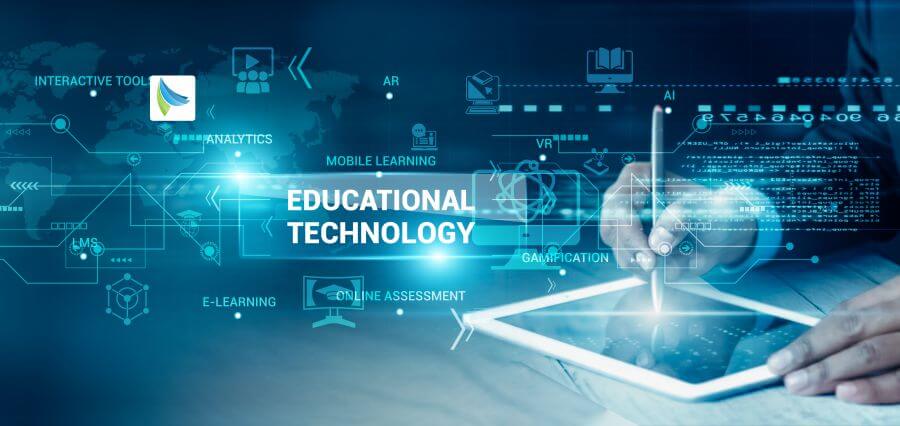With the dynamic learning environment of today, technology is center stage in revolutionizing how students interact with content, teachers, and peers. From pre-school to lifelong learning experiences, using digital platforms and software for learning promises an unprecedented opportunity to reshape the nature of learning. With technology, there is potential to provide more interactive, immersive, and personalized learning experiences that cater to varying needs and interests of learners. The evolution of traditional classrooms into technologically enhanced learning spaces is not a trend but the natural evolution. The addition of smart devices, virtual learning spaces, virtual classrooms, and artificial intelligence aided teachers to overcome the challenges of the new globalized world. Not only are the devices making learning experience learning inclusive and accessible, but they also facilitate greater participation and stimulate students’ critical thinking. Additionally, increased technology use has compelled schools to reimagine pedagogy and implement more student-centered practice.
Personalized Learning with Adaptive Technologies
Most valuable of all that technology has provided to education is perhaps the capacity to personalize education to the student. Adaptive learning software uses algorithms and data analysis to figure out in real time how specific students are doing and to adjust content and pace to address each student’s own challenges and needs. This obviates one of the ancient traps of education, namely that of meeting students where they are at, rather than dumping a single-fits-all curriculum.
In addition to the cognitive benefits, student-centered learning experience promotes increased motivation and student self-efficacy. Students with supportive feedback and tailored materials are more inclined to internalize and adopt the process of learning. Intelligent tutoring systems, computer games, and computer-adaptive tests enable students to learn at their own speed, practice challenging areas, and delve into areas of interest thoroughly. The technologies bridge knowledge gaps and enable continuous progress in learning. In addition, insights from data give teachers a capability of identifying learning trends and responding in due course such that none of their students is lagging behind.
Collaborative and Immersive Learning Environments
Technology supports communication and collaboration by allowing for interactive learning experience environments. Virtual classrooms and learning management systems (LMS) allow synchronous interaction between the teacher and students regardless of physical location. This connection supports team working, peer grading, and collaborative learning activities that mimic actual workplace collaboration, enhancing critical communication and teamworking abilities. It also offers an open classroom where introvert or shy students can contribute willingly using electronic media.
Immersive media like virtual reality (VR), augmented reality (AR), and simulation software speed up learning from the book by offering experiential learning. VR, for instance, can take students to history or to other worlds with perspectives that cannot otherwise be accomplished. AR can place digital information over physical settings, making abstract things seem real. These technologies stimulate interest and enhance memorability, especially in subjects augmented by visual and kinesthetic learning styles, such as science, engineering, and engineering technology, and the arts. In addition, simulation software is also used for medical and aviation training, with secure environments for practicing valuable skills and decision-making.
Closing Educational Disparities and Opening Access
One of the most revolutionary aspects of educational technology is that it can bridge the knowledge gap and expand learning access to quality education. Online environments and materials have increased the learning proximity, advantageously affecting far communities and learners in far or war-torn areas. Open educational resources (OERs), massive open online courses (MOOCs), and language learning apps equalize the playing field for learning access, offering quality learning at a minimal or no cost.
Furthermore, assistive technologies are new channels for students with disabilities. Screen readers, text-to-speech software, and speech recognition bring coursework to visually impaired, hearing-impaired, and motor-impaired students. Multilingual documents and live translation services consistently undermine linguistic barriers, offering parity to education across the world. These technologies make learning geography-independent, impairment-independent, and socio-economic-status-independent and help create a participative and empowered society. Governments and institutions must continue to invest in infrastructure, internet access, and computer skills training to bring all such upgrades to each and every student.
Conclusion
Technology is no longer backstage to learning but center stage in the delivery of effective, interactive, and inclusive learning. Digital technology is transforming conventional learning into an even more dynamic, inclusive, and effective process through personalization, collaboration, and greater access. With policymakers, teachers, technologists, innovators, and designers constantly updating and improving it, the future of learning becomes more adaptive and student-driven. In order to optimize the role of technology in learning, however, stakeholders must also be concerned about data privacy, digital equity, and teacher training. Technology integration is not just a question of machines being available, but sufficient professional development and instruction strategies to go along with it too. Through a culture of innovation and belonging, we can ensure that the advance of technology works to enhance—not diminish—the human imagination and creativity that support effective learning. Through this transformation, we can equip learners to thrive in a more digital and networked world.
Read More: Cybersecurity Considerations in Digital Health Strategies












